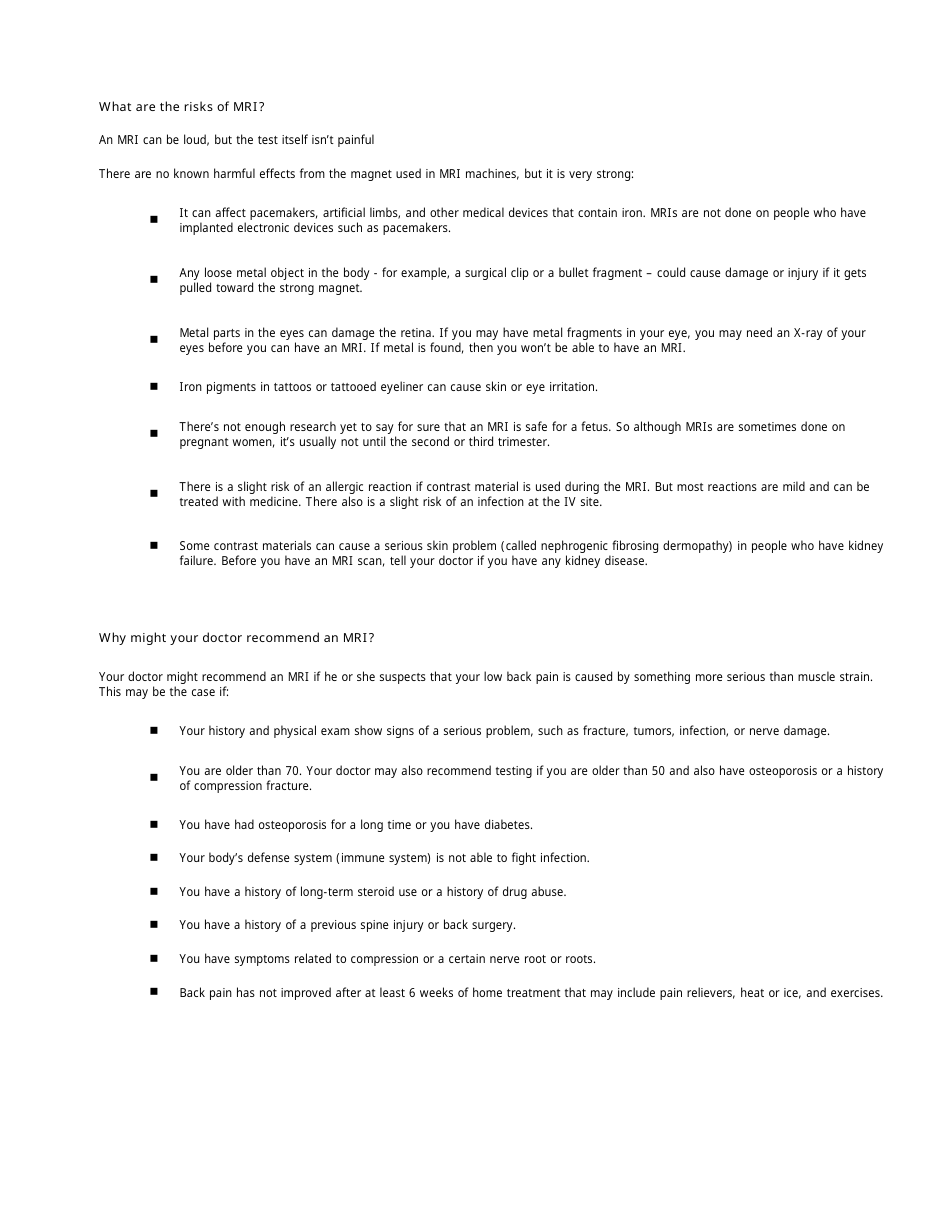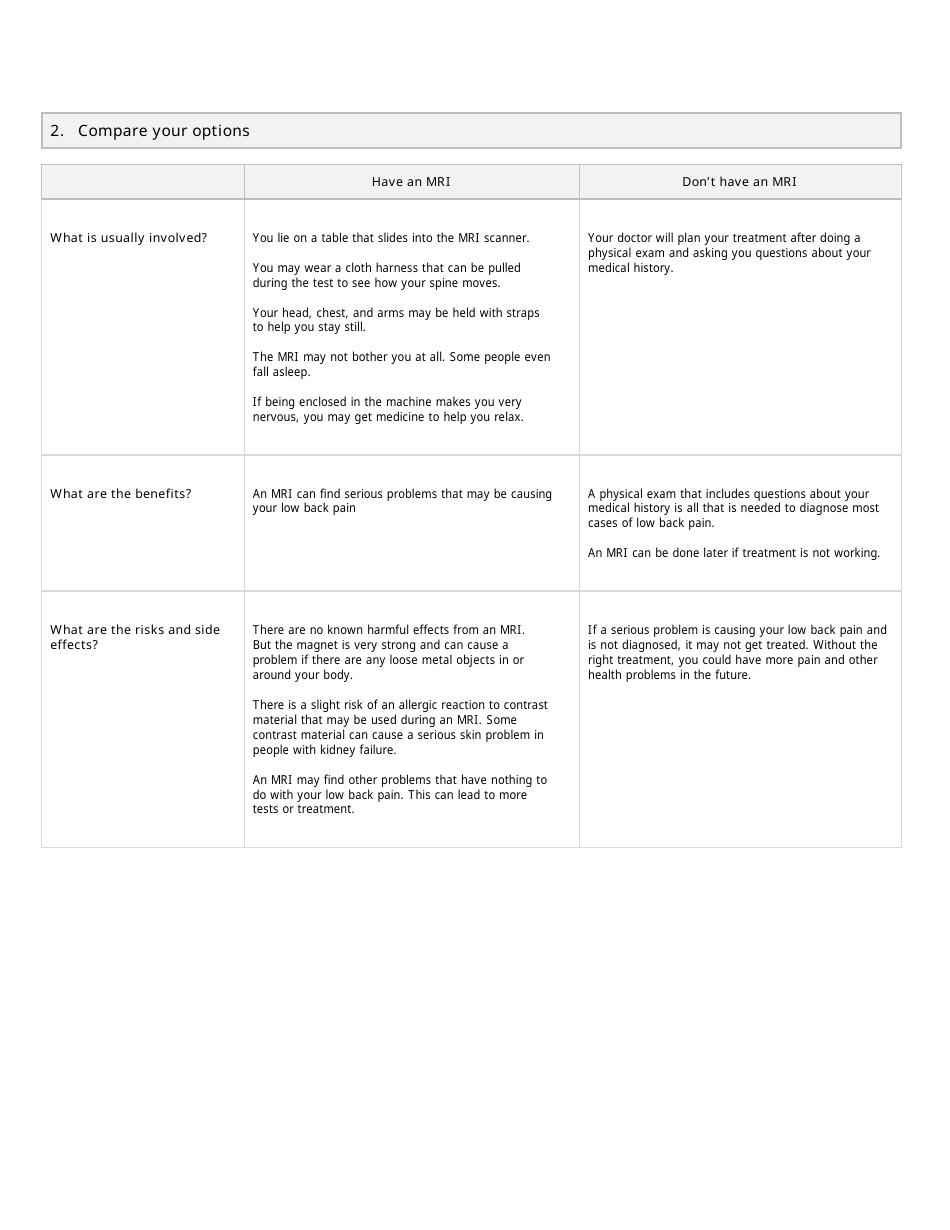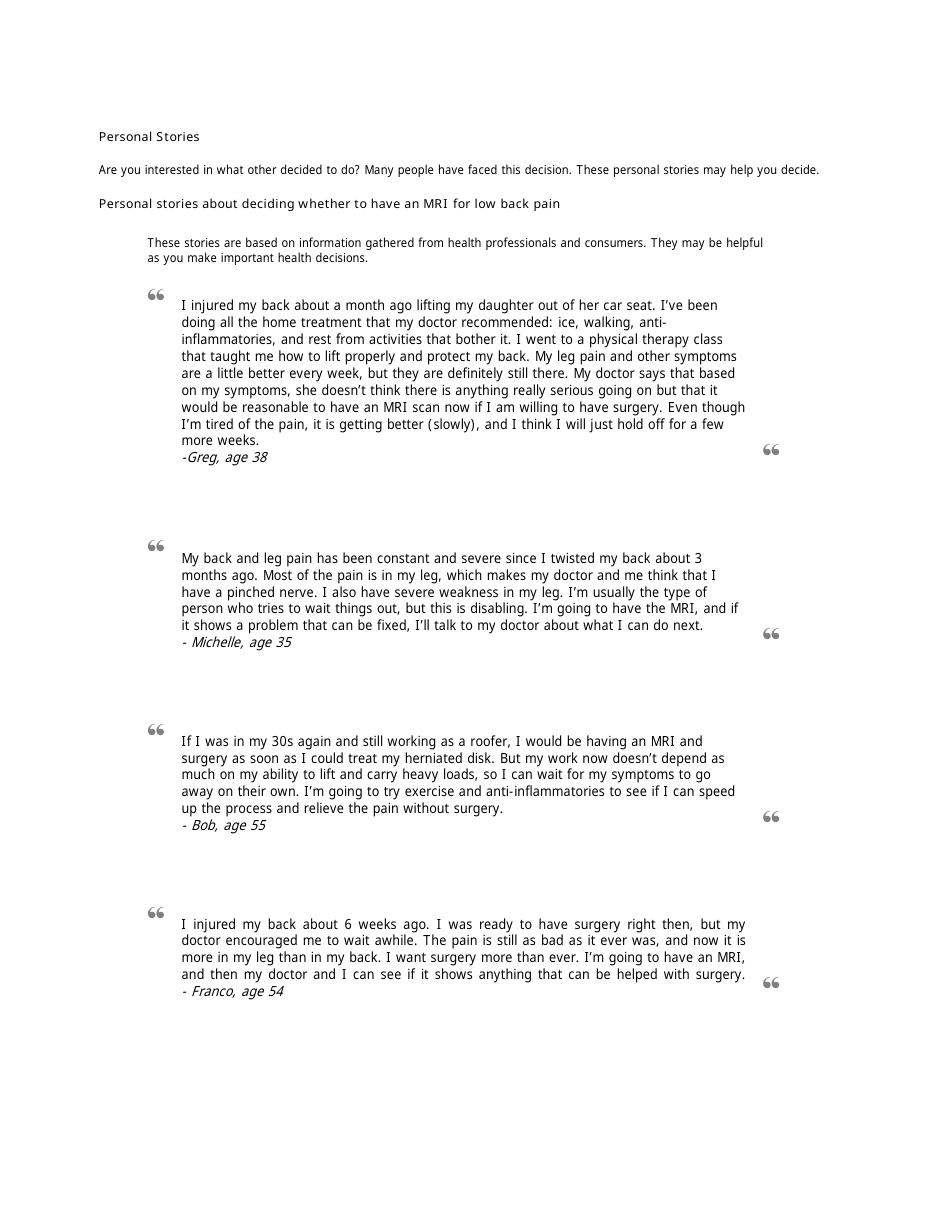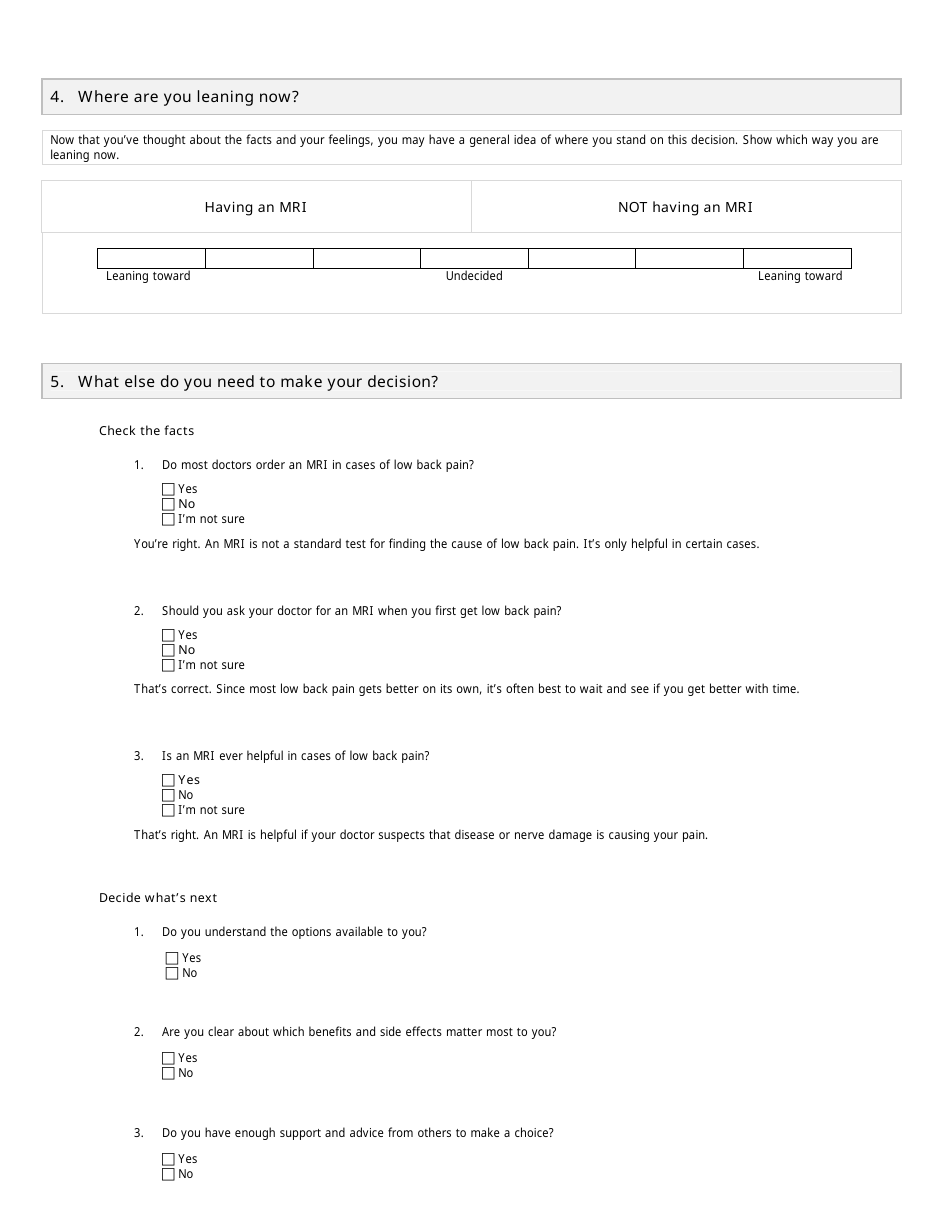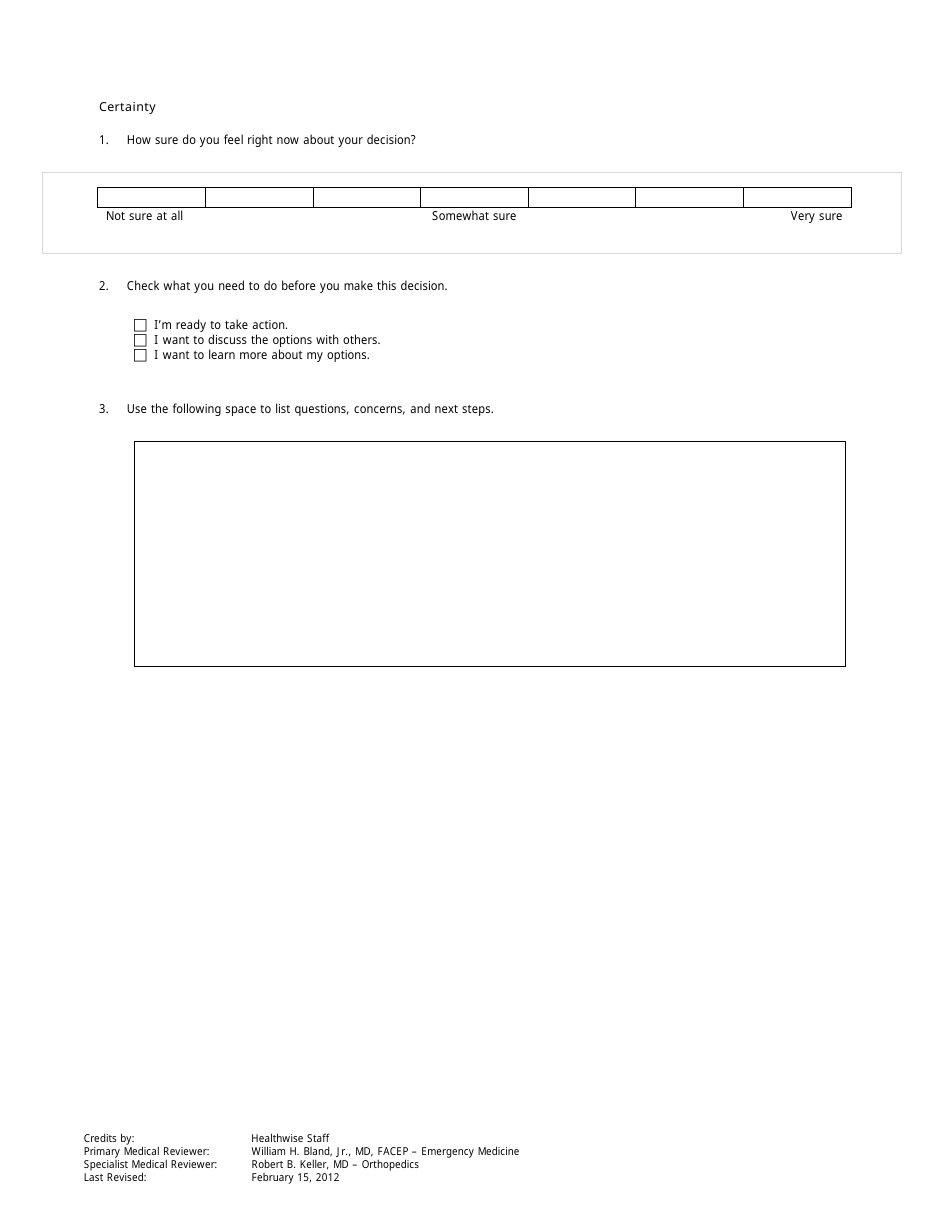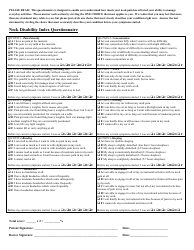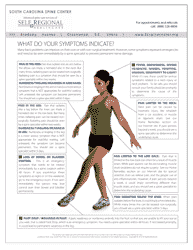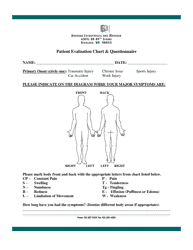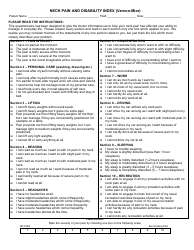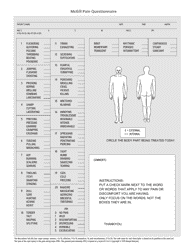Low Back Pain Mri Questionnaire
A Low Back Pain MRI Questionnaire is typically used by healthcare professionals to gather specific information about a patient's lower back pain. This might include the type and intensity of the pain, its location, duration, any triggering or relieving factors, and its impact on the patient's daily life and activities.
The goal is to provide doctors and other health professionals with more detailed information about the patient's symptoms and experiences in order to help identify the root cause of the pain and guide treatment options. It may also determine if an MRI (Magnetic Resonance Imaging) scan is necessary, as this imaging test can help diagnose various conditions of the spine, such as disc herniation, spinal stenosis, or tumors.
The Low Back Pain MRI Questionnaire is typically filed by patients who are being evaluated for lower back pain using magnetic resonance imaging (MRI). This document is filled out under the guidance of a healthcare provider, often a doctor or a specialist such as a neurologist or orthopedic surgeon. The questionnaire aids in assessing the patient's condition by documenting their medical history, current symptoms, and the impact of the pain on their daily activities. It also assists medical professionals in understanding the severity and nature of the patient's lower back pain, which further supports decision-making regarding the necessity of an MRI scan and the ensuing treatment options.
FAQ
Q: What is a low back pain MRI?
A: A low back pain MRI, or Magnetic Resonance Imaging, is a type of non-invasive diagnostic tool used by doctors to view detailed images of the structures in your lower back. It's often used to find the source of chronic back pain.
Q: When might a low back pain MRI be needed?
A: A low back pain MRI might be needed when the patient has severe or persistent pain that does not improve after a few weeks of self-care treatments or physical therapy. It can also be used to assess any injury or conditions like disc herniations, spinal stenosis, tumors, or infections.
Q: What kind of information does a low back pain MRI provide?
A: A low back pain MRI provides a detailed view of your spinal cord and the surrounding tissues, including muscles, ligaments, and bones. It can help identify disc problems, tumors, fractures, and other abnormalities.
Q: What should I expect during a low back pain MRI?
A: During a low back pain MRI, you'll lie on a table that slides into the MRI machine. You'll need to lie still during the procedure, which can last anywhere from 15 to 90 minutes. You may hear loud banging or clicking noises, but the procedure is generally painless.
Q: What is the process to prepare for a lower back pain MRI?
A: Generally, no special preparation is needed before an MRI scan. You may be asked to change into a hospital gown and to remove any metal objects, including jewelry.
Q: Are there any risks associated with a lower back pain MRI?
A: MRI scans are generally safe and do not expose you to radiation like X-rays or CT scans. However, they may not be recommended for certain individuals such as those with pacemakers, certain implants, or who are pregnant.
Q: How should I interpret the results from a low back pain MRI?
A: The results from a low back pain MRI are usually interpreted by a radiologist. They can identify any abnormalities like disc herniation, bone spurs, or tumors that could be causing your pain. Your doctor will then discuss these findings with you and come up with the most appropriate treatment plan.
Q: Does a negative MRI mean that there is no problem in my lower back?
A: Not necessarily. While an MRI can provide detailed images of the structures in your lower back, it may not always identify the source of your pain. If your pain persists despite a negative MRI, your doctor may recommend additional tests or treatments.
Q: Can MRI results vary depending on the machine or the person interpreting the results?
A: Yes, MRI results can vary slightly depending on the machine used and the experience of the person interpreting the images. This is why it's important for the same individual, preferably someone with a great deal of experience, to review all of the images.












